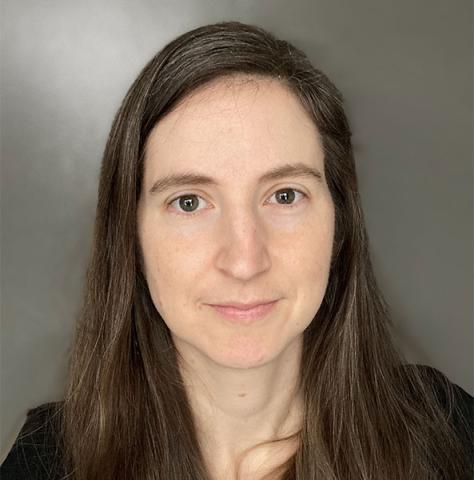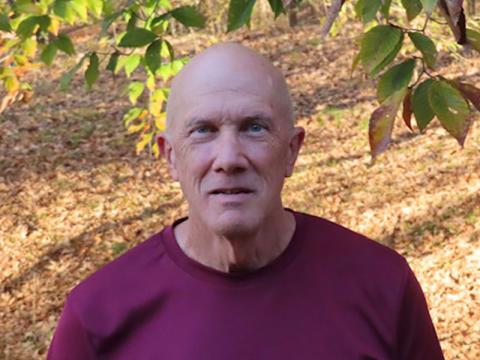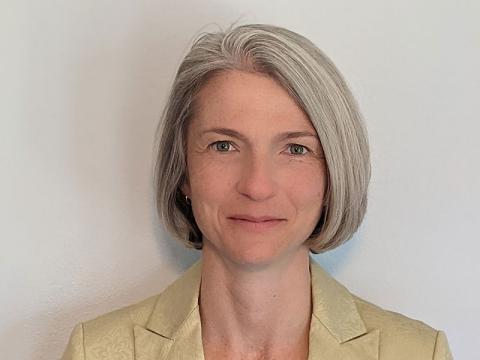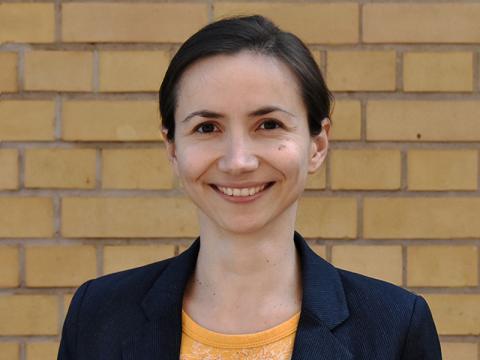Jennifer C. Murphy, M.S.
Jennifer C. Murphy, M.S.
Adjunct Professor

Education & Affiliations
Biography
Much of my career as a hydrologist with the US Geological Survey has focused on using and developing tools to better characterize changes in water quality in US streams and rivers and on better understanding the human and environmental drivers of these changes. I often incorporate water quality data from other Federal agencies, State governments, and local organizations into my research. Though this data retrieval, aggregation, and harmonization process is time consuming and full of nuances and pitfalls, the effort typically expands the geographic and temporal scope of national and regional scale trend assessments providing a more comprehensive perspective than using a single organization's data alone. In addition to national studies completed as part of the USGS's National Water Quality Assessment project, I have assessed changes in river water quality across the Delaware River Basin, in small agricultural ditches in the State of Mississippi, across the Mississippi River Basin, and at sites in the lowermost part of the Mississippi and Atchafalaya Rivers. I focus on nutrients, sediment, and salinity indicators, and have worked with others to develop enhancements to the Weighted Regressions on Time, Discharge, and Season model.
Prior to my focus on better characterization and improved understanding of water quality changes in US rivers and streams, I spent several years exploring the influence of hydrologic changes on river ecology, particularly fish communities in the Tennessee and Cumberland River Valleys and helping to improve methods for estimating water use and consumption of thermoelectric power plants. I also spent time working a Field Geologist for the US Forest Service, preforming gravel pit surveys and abandoned mine inventories, and as a Project Geologist for a civil and environmental engineering consulting company, completing environmental site assessments and geotechnical reports.
I continue to assess river water quality trends at regional and national scales, but I have also begun to focus on better understanding sediment loads and trends in the Lower Mississippi-Atchafalaya Basin. As part of this effort, I am exploring the effects of sediment sampling changes on load and trend estimates and improving available analytical techniques to provide more precise and accurate estimates. As of Fall 2020, I became the Harmful Algal Blooms (HABs) team lead, as part of the USGS's Water Quality Proxies project. This major shift in my research provides the opportunity to apply my deep knowledge of temporal changes in water quality to an urgent environmental and human health issue.
Selected pubs:
Murphy, J.C. (2020) Changing suspended sediment in United States rivers and streams: linking sediment trends to changes in land use/cover, hydrology and climate. Hydrology and Earth System Sciences 24, 991–1010, https://doi.org/10.5194/hess-24-991-2020.
Stets, Edward G., Sprague, Lori A., Oelsner, Gretchen P., Johnson, Hank M., Murphy, Jennifer C., Ryberg, Karen, Vecchia, Aldo V., Zuellig, Robert E., Falcone, James A., and Riskin, Melissa L. (2020) Landscape Drivers of Dynamic Change in Water Quality of U.S. Rivers. Environmental Science Technology 54, 7, 4336–4343. https://doi.org/10.1021/acs.est.9b05344.
Falcone, J.A., Murphy, J.C., and Sprague, L.A. (2019) Regional patterns of anthropogenic influences on streams and rivers in the conterminous United States, from the early 1970s to 2012. Journal of Land Use Science, 13:6, 585-614, https://doi.org/10.1080/1747423X.2019.1590473.
Murphy, J., and Sprague, L. (2019) Water-quality trends in US rivers: Exploring effects from streamflow trends and changes in watershed management. Science of the Total Environment 656, 645-658, https://doi.org/10.1016/j.scitotenv.2018.11.255.
Choquette, A.F., Hirsch, R.M., Murphy, J.C., Johnson, L.T., and Confesor Jr., R.B. (2019) Tracking changes in nutrient delivery to western Lake Erie: Approaches to compensate for variability and trends in streamflow. Journal of Great Lakes Research 45:1, 21-39. https://doi.org/10.1016/j.jglr.2018.11.012.
Mize, S.V., Murphy, J.C., Diehl, T.H., and Demcheck, D.K. (2018) Suspended-sediment concentrations and loads in the lower Mississippi and Atchafalaya rivers decreased by half between 1980 and 2015. Journal of Hydrology 564, 1-11, https://doi.org/10.1016/j.jhydrol.2018.05.068.
Murphy, J. C.; Hirsch, R. M.; Sprague, L. A. (2014) Antecedent flow conditions and nitrate concentrations in the Mississippi River basin. Hydrology and Earth System Sciences, Volume 18, Issue 3, pp.967-979. http://doi.org/10.5194/hess-18-967-2014.
Murphy, J. C., Knight, R. R., Wolfe, W. J. and S. Gain, W. (2013) Predicting ecological flow regime at ungagged sites: A comparison of methods, River Research and Applications 29: 660–669. http://doi.org/10.1002/rra.2570.
Murphy, J.C., Hirsch, R.M., and Sprague, L.A., (2013), Nitrate in the Mississippi River and its tributaries, 1980–2010—An update: U.S. Geological Survey Scientific Investigations Report 2013–5169, 31 p., http://pubs.usgs.gov/sir/2013/5169/.
Courses
R. C. (Charlie) Berger
R. C. (Charlie) Berger
Adjunct Professor

Education & Affiliations
Biography
Dr. Berger is a professional engineer with over forty years of experience in hydraulics, estuarine processes, navigation effects, high velocity channels, and computational modeling. He is currently a Research Hydraulic Engineer (Emeritus) with the USCE Engineer Research Development Center (ERDC) at the Waterways Experiment Station (WES).
Dr. Berger has primary experience and interest in the modeling of estuaries for salinity intrusion, circulation, and sedimentation. Dr. Berger has developed computational modeling systems for estuaries, rivers, vessel effects, and hydraulic structures. As such, he has research interests in computational techniques in hydraulic environments.
Select Journal Articles
Berger, R. C. 1994. “A Finite Element Model Application to a Study of Circulation and Salinity Intrusion in Galveston Bay, Texas,” Chapter 10, in Finite Elements in Environmental Problems, ed. G. F. Carey, John Wiley & Sons, West Sussex, England
Stockstill, R. L., Martin, S. K., and Berger, R. C. 1995.” A Hydrodynamic Model of Vessel-Generated Currents to Determine the Effects of Navigation,” Regulated Rivers: Research and Management, Vol. 11, 211-225, Nov.
Stockstill, R. L., Berger, R. C., Nece, R. E. 1997. “Two-Dimensional Flow Model for Trapezoidal High-Velocity Channels” ASCE, Journal of Hydraulic Engineering, Vol 123, No. 10, 844-852, October
Berger, R. C. and Carey, G. F. 1998. “A Perturbation Formulation for Free-Surface Flow over Curved Surfaces, Part I: Perturbation Analysis,” Int. J. Num. Meth. Fluids 28: 191-200.
Berger, R. C. and Carey, G. F. 1998. “A Perturbation Formulation for Free-Surface Flow over Curved Surfaces, Part II: Computational Model,” Int. J. Num. Meth. Fluids, 28: 201-213.
Burg, C. O. E., Huddleston, D. H., and Berger, R. C. (2001), “An Efficient, Robust Design Tool for Open-Channel Flow,” ASCE Journal of Hydraulic Engineering, Vol. 127, No. 1, pp. 62-71, January.
Stockstill, R.L. and Berger, R.C. 2001. “Simulating Barge Drawdown and Currents in Channel and Backwater Areas,” ASCE Journal of Waterway, Port, Coastal, and Ocean Engineering, Vol 127 No. 5 (Sep-Oct) 290-298.
Berger, R. C. and Howington, S. E. 2002. “Discrete Fluxes and Mass Balance in Finite Elements,” ASCE Journal of Hydraulic Engineering, Vol 128, No. 1 (Jan) 87-92.
Tate, J. N., Berger, R. C., and Stockstill, R. L. 2006. "Refinement indicators for mesh adaption in shallow-water modeling," ASCE Journal of Hydraulic Engineering, Vol 132, No. 8, pp 854-857.
Savant, G., Berger, C., McAlpin, T. O., and Tate, J. N. 2011. “Efficient Implicit Finite-Element Hydrodynamic Model for Dam and Levee Breach,” ASCE J. Hyd. Eng., Vol. 137, No. 9, 1005-1018, Sep 2011.
Savant, G. and Berger, R. 2012. “Adaptive Time Stepping Operator-Splitting Strategy to Couple Implicit Numerical Hydrodynamic and Water Quality Codes,” ASCE Journal of Environmental Eng., Vol 138, No. 9, pp 979-984, Sep 2012.
Savant, G., Trahan, C. J., Berger, C., McAlpin, J. T., and McAlpin, T. O. 2018. “Refinement Indicator for Dynamic-Mesh Adaption in Three-Dimensional Shallow-Water Equation Modeling,” ASCE J. Hydraul. Eng. 2018, 144(2) : 0617026
Trahan, C.J., Savant, G., Berger, R. C., Farthing, M., McAlpin, T. O., Pettey, L., Choudhary, Dawson, C.N., 2018. "Formulation and application of the adaptive hydraulics three-dimensional shallow water and transport models," J. Comp. Physics, Vol. 374, 1 Dec. 2018, pp. 47-90. https://doi.org/10.1016/j.jcp.2018.04.055
Berger, R. C. and Kiesel, Jens. 2019. “Conceptual Model of Salinity Intrusion by Tidal Trapping,” ASCE Journal of Hydraulic Eng. Vol. 145, Issue 10, July, https://doi.org/10.1061/(ASCE)HY.1943-7900.0001627
Select Reports
Berger, R. C., McAdory, R. T., Martin, W.D. and Schmidt, J. H.“Houston-Galveston Navigation Channels, Texas Project; Report 3, Three-Dimensional Hydrodynamic Model Verification,” Technical Report HL-92-7, USAE WES, Vicksburg, MS. Jul 1995.
Berger, R. C., McAdory, R. T., Schmidt, J. H. and Martin, W.D. “Houston-Galveston Navigation Channels, Texas Project; Report 4, Three-Dimensional Numerical Modeling of Hydrodynamics and Salinity,” Technical Report HL-92-7, USAE WES, Vicksburg, MS. Sep. 1995.
McAnally, W. H. and Berger, R. C. 1996. “Salinity Changes in Pontchartrain Basin Estuary Resulting from Bonnet Carre Freshwater Diversion,” Technical Report CHL-97-2, USAE WES, Vicksburg, MS. Feb 1997
Tate, J. N., and Berger, R. C. (Aug) 2006. “Houston-Galveston Navigation Channel, Texas Project, Navigation Channel Sedimentation Study, Phase 1, ERDC/CHL TR-06-8, U.S. Army Corps of Engineers, Engineer Research and Development Center, Coastal and Hydraulics Laboratory, Vicksburg, MS.
Savant, G., and Berger, C. 2015 (Apr). “Three-Dimensional Shallow Water Adaptive Hydraulics (ADH-SW3) Validation: Galveston Bay Hydrodynamics and Salinity Transport,” ERDC/CHL TR-15-3, U.S. Army Corps of Engineers, Engineer Research and Development Center, Vicksburg, MS.
Courses
Amanda J. M. Oliver
Amanda J. M. Oliver
Adjunct Professor

Education & Affiliations
Biography
After receiving my bachelor’s degree, I began working for the Illinois Natural History Survey studying life history characteristics of an invasive plant. I moved from Illinois to Colorado and worked for the Colorado Division of Wildlife surveying plant communities throughout the Rocky Mountains.
My government career began when I moved to Missouri to get my master’s degree and began working for the St. Louis District Corps of Engineers. As a biologist and planner, I planned multimillion dollar restoration projects, wrote National Environmental Policy Act (NEPA) documents, and conducted fisheries research.
My husband’s job took us to Canada and upon returning I began working as a contractor for the U.S. Army Corps of Engineers, Engineer Research and Development Center (ERDC). My work with ERDC involves utilizing elevation, gage, landcover, faunal and other geospatial datasets to address research questions, plan projects, and monitor outcomes. All my experiences have fed into my current research interest in the use of geospatial data to explain species distribution and the condition and trends in aquatic habitat.
Selected Publications
Oliver, A. J. M., C. E. Murphy, C. D. Little, Jr., and K. J. Killgore. 2016. Measuring Connectivity of Floodplain Waterbodies to the Lower Mississippi River. MRG&P Tech Note No. 1. Vicksburg, MS: U.S. Army Engineer Research and Development Center. http://hdl.handle.net/11681/20368
Guntren, E.F., A.J.M. Oliver, T.M. Keevin, and D.C. Williams. 2016. Change in Lower Mississippi River secondary channels: an atlas of bathymetric and photographic data. MRG&P Report No. 8, U.S. Army Corps of Engineers, Vicksburg, MS. 533 p.
Koch, B., R.C. Brooks, A. Oliver, D. Herzog, J.E. Garvey, R. Hrabik, R. Colombo, Q. Phelps, and T. Spier. 2012. Habitat selection and movement of naturally occurring pallid sturgeon in the Mississippi River. Transactions of the American Fisheries Society. 141:112-120.
Oliver, A.J., C. Hong-Wa, J. Devonshire, K.R. Olea, G.F. Rivas, and M.K. Gahl. 2011. Avifauna richness enhanced in large, isolated urban parks. Landscape and Urban Planning. 102:215-225.
Courses
Zhengming (Allan) Ding
Zhengming (Allan) Ding
Assistant Professor

Education & Affiliations
Biography
About Professor Ding:
Dr. Ding is a faculty member affiliated with Department of Computer Science, Tulane University. Before that he was a faculty member in Indiana University-Purdue University Indianapolis. He received the Ph.D. degree from the Department of Electrical and Computer Engineering, Northeastern University, USA in 2018.
Research Interests
His research interest lies in computer vision and machine learning, with a focus on developing scalable algorithms to learn robust representations from large-scale data including the following specific topics:
- Deep Learning (Deep Auto-Encoder, Deep CNN, LSTM, Generative Model)
- Transfer Learning, Multi-view Learning
- Low-Rank Modeling, Manifold Learning, Subspace Learning, Metric Learning
- Large-scale Data Analysis, Social Media Analytics
Teaching
CMPS 2200 Introduction to Algorithms [Spring 2021]
Selected Publications
[1]. Zhengming Ding, and Hongfu Liu. Marginalized Latent Semantic Encoder for Zero-Shot Learning. IEEE Conference on Computer Vision and Pattern Recognition (CVPR), pp. 6191-6199, 2019.
[2]. Zhengming Ding, Ming Shao, and Yun Fu. Robust Multi-view Representation: A Unified Perspective from Multi-view Learning to Domain Adaption. International Joint Conference on Artificial Intelligence (IJCAI), pp. 5434-5440, 2018
[3]. Zhengming Ding, Ming Shao and Yun Fu. Low-Rank Embedded Ensemble Semantic Dictionary for Zero-Shot Learning. IEEE Conference on Computer Vision and Pattern Recognition (CVPR), pp. 2050-2058, 2017.
[4]. Zhengming Ding, Yun Fu. Low-Rank Common Subspace for Multi-View Learning. IEEE International Conference on Data Mining (ICDM), pp. 110-119, 2014.
[5]. Zhengming Ding, Ming Shao and Yun Fu. Latent Low-Rank Transfer Subspace Learning for Missing Modality Recognition. Twenty-Eighth AAAI Conference on Artificial Intelligence (AAAI), pp. 1192-1198, 2014.
Xiang Ji
Xiang Ji
Assistant Professor

Education & Affiliations
Biography
2020 - Present: Assistant Professor of Mathematics, Tulane University
2018 - 2020: Postdoc, UCLA
Research
Statistical Phylogenetics, Statistical Computing and Software development, Bioinformatics, Viral and Multigene Family Evolution
Kalina Mincheva
Kalina Mincheva
Assistant Professor

Education & Affiliations
Biography
2020 – Present: Assistant Professor, Tulane University
2016 – 2020: Gibbs Assistant Professor, Yale University
Research
Algebraic and Tropical Geometry
